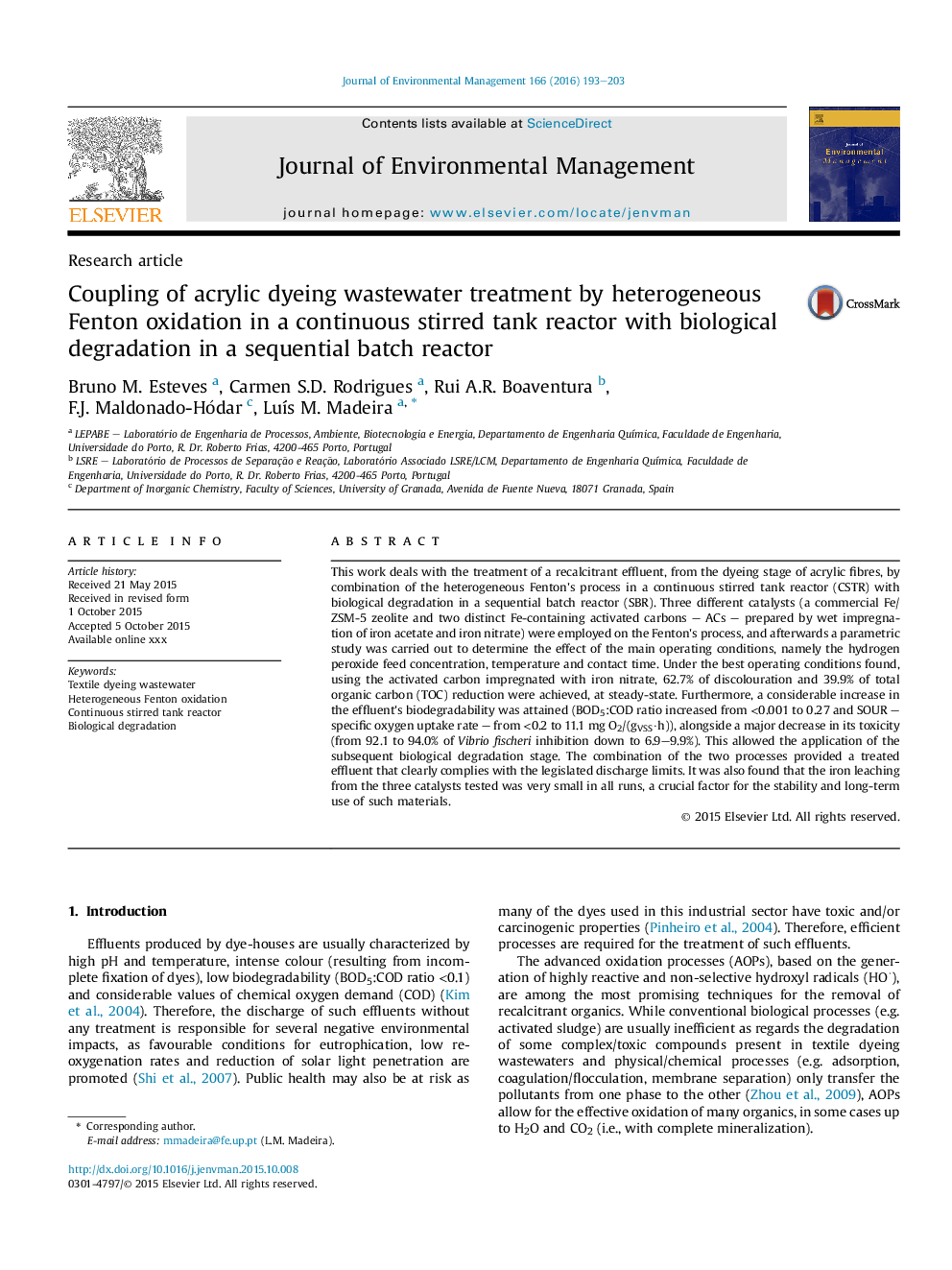| کد مقاله | کد نشریه | سال انتشار | مقاله انگلیسی | نسخه تمام متن |
|---|---|---|---|---|
| 7481375 | 1485246 | 2016 | 11 صفحه PDF | دانلود رایگان |
عنوان انگلیسی مقاله ISI
Coupling of acrylic dyeing wastewater treatment by heterogeneous Fenton oxidation in a continuous stirred tank reactor with biological degradation in a sequential batch reactor
ترجمه فارسی عنوان
پیوند تصفیه فاضلاب رنگرزی اکریلیک با اکسیداسیون ناهمگن فنتون در یک راکتور مخزن پیوسته با تخریب بیولوژیکی در یک رآکتور بتنی متوالی
دانلود مقاله + سفارش ترجمه
دانلود مقاله ISI انگلیسی
رایگان برای ایرانیان
کلمات کلیدی
فاضلاب رنگرزی نساجی، اکسایش هیدروژن فنتون، راکتور مخزن پیوسته، تخریب زیستی،
موضوعات مرتبط
مهندسی و علوم پایه
مهندسی انرژی
انرژی های تجدید پذیر، توسعه پایدار و محیط زیست
چکیده انگلیسی
This work deals with the treatment of a recalcitrant effluent, from the dyeing stage of acrylic fibres, by combination of the heterogeneous Fenton's process in a continuous stirred tank reactor (CSTR) with biological degradation in a sequential batch reactor (SBR). Three different catalysts (a commercial Fe/ZSM-5 zeolite and two distinct Fe-containing activated carbons - ACs - prepared by wet impregnation of iron acetate and iron nitrate) were employed on the Fenton's process, and afterwards a parametric study was carried out to determine the effect of the main operating conditions, namely the hydrogen peroxide feed concentration, temperature and contact time. Under the best operating conditions found, using the activated carbon impregnated with iron nitrate, 62.7% of discolouration and 39.9% of total organic carbon (TOC) reduction were achieved, at steady-state. Furthermore, a considerable increase in the effluent's biodegradability was attained (BOD5:COD ratio increased from <0.001 to 0.27 and SOUR - specific oxygen uptake rate - from <0.2 to 11.1 mg O2/(gVSS·h)), alongside a major decrease in its toxicity (from 92.1 to 94.0% of Vibrio fischeri inhibition down to 6.9-9.9%). This allowed the application of the subsequent biological degradation stage. The combination of the two processes provided a treated effluent that clearly complies with the legislated discharge limits. It was also found that the iron leaching from the three catalysts tested was very small in all runs, a crucial factor for the stability and long-term use of such materials.
ناشر
Database: Elsevier - ScienceDirect (ساینس دایرکت)
Journal: Journal of Environmental Management - Volume 166, 15 January 2016, Pages 193-203
Journal: Journal of Environmental Management - Volume 166, 15 January 2016, Pages 193-203
نویسندگان
Bruno M. Esteves, Carmen S.D. Rodrigues, Rui A.R. Boaventura, F.J. Maldonado-Hódar, LuÃs M. Madeira,
